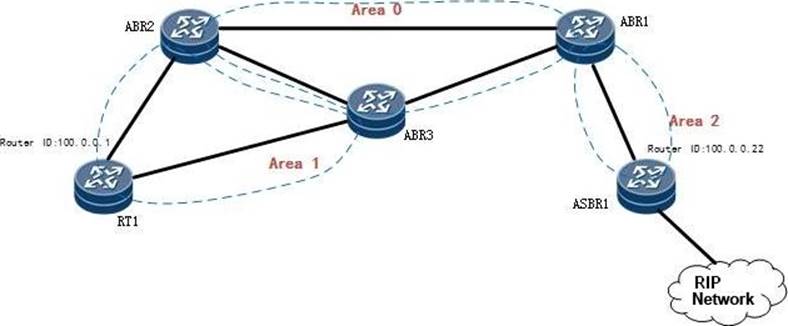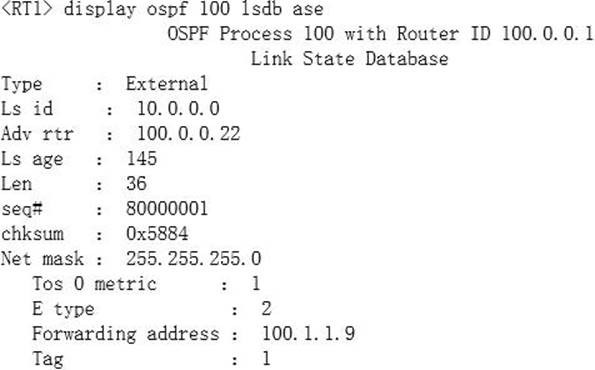As shown in the figure, Router ABR1 (Router ID: 100.0.0.22) imports a RIP route 10.0.0.0/24. Viewing the LSDB of router RT1 has the ASE LSA with an LS ID of 10.0.0.0 generated by ASBR1, but the routing table of RT1 does not have a corresponding route.
As shown in the figure, Router ABR1 (Router ID: 100.0.0.22) imports a RIP route 10.0.0.0/24. Viewing the LSDB of router RT1 has the ASE LSA with an LS ID of 10.0.0.0 generated by ASBR1, but the routing table of RT1 does not have a corresponding route.

The possible causes are: (Multiple choices)

A . Router ASBR1 does not generate ASBR SUMMARY LSA with LS ID 100.0.0.22 to Area 2.
B . Router ABR1 does not generate ASBR SUMMARY LSA with LS ID 100.0.0.22 to Area 0.
C . Router ABR2 does not generate ASBR SUMMARY LSA with LS ID 100.0.0.22 to Area 0.
D . Router ABR3 does not generate ASBR SUMMARY LSA with LS ID 100.0.0.22 to Area 1.
E . Router RT1 does not have an OSPF Inter-area route to the forwarding address 100.1.1.9.
F . Router RT1 does not have an OSPF external (ASE) route to the forwarding address 100.1.1.9.
Answer: BDE
Latest H12-221-ENU Dumps Valid Version with 623 Q&As
Latest And Valid Q&A | Instant Download | Once Fail, Full Refund

